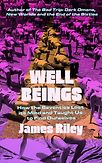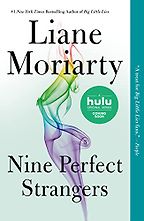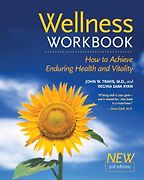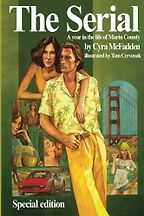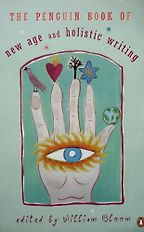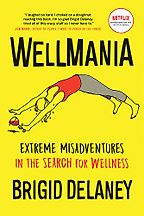Wellness is an interesting topic for a book list. It sounded like a self-explanatory concept, as it’s a term I see everywhere, but it turned out that I didn’t know so much about its origins. Would you give us a brief overview?
In the contemporary sense, wellness comes with a lot of baggage. It’s easy to be cynical about a multi-billion-dollar industry dominated by celebrities selling peculiar candles, or otherwise advertising expensive pursuits that are only accessible to people who are, financially and materially, doing very, very well already. But in the 1970s, ‘wellness’ meant something very specific, an aspirational approach to health that had something akin to a political radicalism connected to it.
Wellness, as it was first outlined by the biostatistician Halbert Dunn in his book High-Level Wellness (1961) described a form of well-being that attended equally to the mind, the body and the ‘spirit’—one’s sense of purpose in life. For Dunn, being well meant more than being merely ‘not ill’; it meant a state of fully realised potential in which you were free to live with ‘energy to burn’.
Dunn was influenced by the World Health Organisation who in 1946 moved to ratify their constitutional definition of health to describe ‘a state of complete physical, mental and social well-being and not merely the absence of disease and infirmity’. It was a view in line with the reconstructive political atmosphere of the post-war period. Similar drives towards health—and health understood as an optimal state rather than ‘merely’ survival—were taking place in Britain and America. Both countries were variously transitioning from warfare to welfare states, making use of wartime infrastructure to create—particularly in the case of the British NHS, a totalising cradle-to-grave health service. The NHS recognised that ill-health was not just a matter of physical ailments; health was also connected to your circumstances: how you lived, where you lived, what your material and financial surroundings were. This complex of intersectional issues fed into to what was understood by being well.
“I started to ask myself: What’s important? Who and what are my priorities?”
While in post at the Office of Vital Statistics, Dunn would analyse enormous amounts of data to look for critical spike points in terms of mortality. He saw them in urban concentrations, and he felt that we were being beset by what he called ‘the diseases of modernity’— cardiovascular diseases and so on. He built up a picture of a sedentary post-war population living longer lives in increasingly more crowded, pressurized environments. In such situations, he argued, it was important not just to survive but to thrive and to have a sense of purpose. Wellness for Dunn thus meant prioritising and maximising your organic and individual potential.
This was not just an individualistic, look-after-yourself, take-what-you-need, call to arms. Dunn’s take on wellness came with a built-in ideology, that spoke of society as an organic commonwealth made up of multiple, interdependent cells. If we are all individual cells in the organic unity we call society or culture or civilisation, then we have a duty to be healthy, so that the wider organism can also be healthy. Our own health feeds into the health of wider organisations—the family, social organisations, all the other networks we are a part of. His point was that if we all collectively strive for a greater sense of wellbeing, we will all be better off as a social group.
Dunn offered an impressively ecological social world view, but his ideas were not without problems; he was a member of the American Eugenics Society and he thought we could genetically instil wellness through good breeding.
When Dunn published High-Level Wellness, Aldous Huxley was doing the rounds talking about ‘human potential,’ a similar concept, in essence. Huxley was thinking about all the great things we could achieve if we could access our maximum cogitating capacity. These ideas caught the tailwinds of the coming-into-being counterculture, particularly when seen in the light of Huxley’s other writings on mescaline and LSD. And so, as the 1960s progressed, Huxley became something of the patron saint of psychedelia as well as the Esalen Institute, the capital of the Human Potential Movement
Meanwhile Dunn’s High-Level Wellness became a cult text among medical and administrative professionals. The book was read and admired by Dunn’s contemporaries, but its ideas were rarely implemented at the time, and it certainly was not embraced by the counterculture.
The shift came in the early- to mid-1970s when John Travis and Don Ardell rediscovered Dunn’s work and brought in some countercultural thinking, to present wellness as a way of maximising personal and social potential through a combined focus on mental health, physical health, and Dunn’s idea of a guiding life purpose. This came at a time when people were beginning to think carefully about stress, about diet and lifestyle, when people were beginning to investigate alternative religions and spiritual practices. Travis, Ardell and others re-popularised wellness just as many Americans were discovering yoga for the first time.
In your new book Well Beings: How the Seventies Lost its Mind and Taught us to Find Ourselves, a cultural history of the 1970s from the viewpoint of alternative health, you make an interesting point about wellness having since evolved into an element of the luxury lifestyle. Your first book recommendation, Liane Moriarty’s Nine Perfect Strangers, is set on a 10-day wellness retreat.
It’s a great thriller of its type. It’s tightly written. When I’m not writing on the 1970s, I’m an academic, a literary critic—I teach contemporary English literature—and I offer this here as a very good example of popular fiction. I don’t denigrate it for that. By calling it ‘fiction’, I mean it is yet to accumulate ‘literary’ status. I do think that will come, not least because it is a good go-to text if you want to get an overview of the contemporary stereotypes connected to wellness, both in terms of its seductions and its problems.
I was going to nominate Michel Houellebecq’s Atomised (1998) on account of its excoriating depiction of a ‘New Age’ retreat-style resort. On balance, though, while Moriarty doesn’t bring to her book the same mordant gravitas as Houellebecq does to his, and while Nine Perfect Strangers is thus a comparatively much ‘lighter’ read, I think it would be hard to find another recent novel so immersed in or at least so in-tune with the glossy, Instagrammable exclusivity of modern wellness. Read the acknowledgements and you certainly get a sense that Moriarty has spent some time in a resort similar to the one she describes, and that she came away somewhat ambivalent.
From this context she’s crafted a very engaging story, that is very much a page turner. All the shimmering attractions of the modern wellness industry are there—infinity pools, super-smoothies, personal wellness advisors—but so too are all the anxieties. The plot clearly veers towards an image of the wellness industry as something malevolent, even cultish, a set of practices that verge on brainwashing and which raise difficult questions about consent. All of these things were said about the Esalen Institute and have been said about similar institutions since the 1970s.
It’s not without its problems as a novel. There are some plot elements that stretch credulity, and it is essentially a set of strangers in an ‘old dark house’, except of course Moriarty’s house is brand new and perpetually bathed in sunlight. At its best, though, Nine Perfect Strangers gets to the root of what I was trying to highlight in my own book. As a novel it is aware of the power of conviviality and the power of a certain kind of mutual care. For example, there’s one point, early on, where the central character—a weary, slightly cynical novelist—has a personal consultation with her assigned ‘wellness counsellor.’ When asked how she’s feeling, the novelist briefly let’s her guard down and with massive understatement (as the details of which the novel make clear) admits she has ‘actually been feeling very unwell lately.’ In response, the counsellor simply puts his hand on her shoulder and says: ‘I know you have.’ That’s it.
There’s nothing sexual or sinister about it, it is simply a moment of comfort through human contact. It is a brief encounter, but one that’s incredibly emotional. It’s a moment that shows the power of non-judgemental understanding. I think that’s what Moriarty ultimately frames so well: the value of sympathetic human connection.
I loved the point you made about certain works of popular fiction simply being ‘yet to accumulate literary status.’ There are writers of genre fiction who are clearly a cut above the rest. But let me move us on to your second recommendation, John Travis and Regina Sara Ryan’s The New Wellness Workbook. It’s a self-help book first published in 1977 and now in its third edition.
It’s a great book. It’s the source book for a lot of the thinking I’ve been talking about, and there’s a fascinating autobiographical narrative running all the way through. Travis uses the book to outline his ideas and to tell the story of how and why he left professional medicine to set up the first dedicated ‘Wellness Center,’ in California’s Marin County in 1975. It’s debatable whether Travis actually was the first. One can point to lots of similar, parallel examples that offered clients the same type of service, but Travis, I think, could argue he was the first to use the actual branding when calling his operation ‘The Wellness Resource Center’.
The Wellness Workbook is a practical textbook. It contains most of the documents Travis would use in his consultations and it essentially takes the reader through a typical course offered by the centre. All these graphs and questionnaires provide a fascinating glimpse into what the pursuit of wellness meant in the 1970s. The book’s real value, though, lies in the autobiographical aspect. It’s an early example of what has now become a veritable subgenre of self-help books, the ‘wellness journey’.
Travis is extremely candid about his own sense of professional and personal malaise—how he trained as a doctor, and in the early 1970s became incredibly disheartened with the fact that when faced with wards of terminal cancer patients he couldn’t do anything other than load them up with painkillers. At one point, Travis describes how he was pushed to the point of suicide through a combination of stress, disillusionment, and the weight of his own familial expectations. His father was a well-loved country doctor, and Travis realised his work was utterly at odds with the small town, long-term, personally focused work his father had done all his working life. Travis’ problem was thus two-fold: he was wrestling with the frustration that came from realising the limits of his work and he was struggling with all manner of psychological hang-ups regarding his father. He needed to deal with both challenges at once.
He set about this by trying to develop a more holistic approach to medicine. He would try and attend to his patients’ mood and mindset as well as their physical ailments. If someone came to him with high blood pressure, rather than giving them a handful of drugs, he would talk to them about relaxation techniques. At the same time, he was trying to self-analyse his own life, what he had done well and what he had done wrong. This twin approach thus set the tone for what he would later term ‘wellness’: a detailed, comprehensive re-evaluation of all aspects of an individual’s life, oriented towards the task of helping them to develop towards long term mental and physical health.
Five Books interviews are expensive to produce. If you're enjoying this interview, please support us by donating a small amount.
The other book along these lines is High Level Wellness (1977) by Donald Ardell. It’s another practical guidebook; but with a personal narrative of its own. Travis and Ardell knew each other and worked with each other. If you’re interested in The Wellness Workbook, I very much suggest you have a look at the Ardell too. It makes for a curious study to compare their ‘systems,’ their ‘journeys’ and their pages of questionnaires.
Of course, there are problems. In both there’s a covert, quietly spoken but nonetheless detectable sense of patient-blaming: if these methods don’t work, if you fail to get well, then it’s your fault. But beyond that, there’s a very clear sense of what wellness used to mean. And what I argue in my book is that there’s a lot we can extrapolate from wellness, seventies style, that can help us through our own contemporary difficulties.
That sounds interesting and potentially useful. Your third wellness book returns to Marin County, California. Cyra McFadden’s The Serial is a satirical novel published in 1977. I’m reading it now. It’s very funny.
As I said, I’m an academic working on contemporary fiction. So, when I write about wellness, I’m not writing a self-help book. I also come from a cultural-historical perspective; I write about film, music, and also other forms of popular culture. With my project, Well Beings, I’ve been trying to diagnose and question one of the key ‘myths’ of the 1970s, the idea that the decade lost all of the radicalism of the 1960s and disappeared into self-regard. I argue that wellness absorbed this radicalism, and that there was a real political potency to the practice. That said, the idea of the 1970s as a decade of compromise, political exhaustion and selfishness is hard to avoid. There are three texts from the period that helped to establish this: The Culture of Narcissism (1976) by Christopher Lasch, which is a sociological take; Tom Wolfe’s essay ‘The Me Decade,’ which is classic piece of New Journalism, and then there’s the fictional take, Cyra McFadden’s novel, The Serial (1977), subtitled: ‘a year in the life of Marin County.’
Marin County is an affluent area outside of San Francisco that was famous in the 1970s for being an alternative health hotspot. In The Serial, McFadden uses Marin as the backdrop for a long, extended satire of the Human Potential Movement. She lived there at the time and what she saw around her was little more than a vapid culture of selfishness and self-regard.
The Serial got a lot of attention from the national press and was later adapted into a film. The novel is full of invented names and but also a lot of actual locations. Travis’ Wellness Resource Center even makes an appearance at one point. Thanks to this specificity, McFadden received a lot of criticism—often very vociferous—from those who felt personally mocked by the novel. McFadden’s response was that she was not questioning those who want to improve their lives or enhance their sense of wellbeing. Rather, she was trying to critique what she calls the “smell of sanctimony” that went with it. It was this attitude and not specific people, that McFadden had in her sights.
But the brilliance of The Serial as a piece of writing lies in the way that McFadden nails the art of satirical superficiality a good decade before Bret Easton Ellis tried something similar in American Psycho (1991). This style allows The Serial to be both incisive and funny. There are plenty of scenes, for example, that play out on the passive aggressive dinner party circuit. We’re shown groups of people who talk at length but fail to listen to each other and who are able to talk about cookbooks and primal screaming in exactly the same breath, as if there’s no difference between them.
The main plot follows a young-ish, middle-class couple who move to the area and then split up before going through various individual crises and exploring alternative modes of health in response. It’s very well done and very well written. Razor sharp. A collection of vignettes, all superbly well observed. The Serial isn’t that well known today but —speaking as a critic— I think it really should be right up there alongside Armistead Maupin’s Tales of the City (1978).
That sounds great. Thanks for the recommendation, it was a new one to me. The fourth text you’ve chosen to recommend is The Penguin Book of New Age and Holistic Writing, edited by William Bloom. It was published in 2000.
I recommend it for a number of reasons. When we talk about wellness now, we think about a commercialised industry. You can go to the supermarket, and there might be a wellness section, right?
It’s ubiquitous.
Yes, ubiquitous. But ‘wellness’ is also an umbrella term. In the 1970s, however, it was a subset, part of the wider Human Potential or New Age scene, as one might call it. It was one spot on a much bigger and more complex map. Bloom’s book provides a very good overview of that entire territory. It’s basically a primer that introduces the reader to much of the material someone like John Travis might have been reading in the 1970s. Bloom does a great job of bringing together philosophical texts alongside mystical texts, self-help texts, texts about yoga and so on. It’s all here: spirituality, new science, ecology, the living Earth, holism, healing. Earth mysteries. All kinds of things. It would also work very well alongside The Serial, because the people McFadden was satirising, all those who were restlessly hopping from one system to another—this is the material they would have been reading.
You could easily fill a shelf with all the books that Bloom excerpts, but he also lets you make your own decisions. There’s no overt argument framing the material. Rather, it’s more of an archive of test which, in some cases, are hard to find on their own. It’s very well categorised, very well organised. It’s got a great set of supplementary reading suggestions. I would very much recommend it to curious readers and serious researchers alike.
I love speaking to researchers about books; you always have very strong opinions on indexes and categorisation. Which I appreciate. And perhaps this brings us to our final book, which is Bridget Delaney’s Wellmania: Misadventures in the Search for Wellness. In it she recounts how she was forced to rethink her ‘life fast, die young’ attitude when she reached her thirties. Tell us more.
Yes, I liked this one. Very much. It’s a really good example of a personal journey through wellness culture and, in that sense—and I don’t mean this in a bad way—it’s a good example of the kind of book I didn’t want to write.
I always had a very clear idea of what I wanted to do with Well Beings. It was connected to a previous book I wrote about the end of the 1960s called The Bad Trip. I wanted to do something of a follow-up looking at the retreats, the meditation centres, the whole 1970s scene. But as I got into it, I realised that because wellness had such contemporary relevance, it seemed useful to focus on how wellness as a concept came to the fore during the decade.
For the record, I have actually tried a lot of the methods and practices I write about in the book. I could have done a journey-through-wellness type of project. But instead, I wanted to write an engaging, narrative-focused cultural history. But I see the value of that more personal engagement, and this is a wonderful example of the form. It’s well-researched and very engaging. It really communicates a sense of curiosity and illustrates how curiosity can lead to commitment, and, how that effort can, in turn, lead to change.
Practicing wellness is, invariably, a personal process. One thing that a lot of the practitioners say, and certainly what Travis often said, is that the pursuit of wellness is necessarily subjective. Part of the journey is working out what works for you. That can open you to the criticism that you are simply cherry-picking from lots of different traditions in a restless way, indicative of the way we might swipe and scroll our way through on-screen options. That off-the shelf attitude started in the 1980s with the rise of ‘lifestyle branding’: the tailoring of products to meet personal aspirations. What the practitioners of the 1970s argued, in contrast, was that wellness takes time, commitment and often an investment of money. Wellmania, I think, follows that line. It makes it clear that some things work, and some things don’t. What you need, throughout it all, is curiosity-led focus and a willingness to experiment.
I wanted to close by asking whether writing a book about wellness has affected the way that you live.
Well, yes, there was one book I came across which turned out to be very sobering: Is It Worth Dying For? (1984) by Robert Eliot, a study of work, stress and heart attacks. It drew on Eliot’s own experiences as an academic entering his forties. He didn’t drink, didn’t smoke, had no history of heart problems. He was interested, as a medical academic, in cardiovascular disease. He was driven, ambitious but he was also being overwhelmed with stress, constantly exhausted going from consultation to seminar to conference and back again with no rest or respite in between. His aim, as he explains, was career advancement. He wanted to be chief of cardiology by his early forties. Professional achievement and the status that came with it: that was his target. But this ambition was the very thing putting enormous pressure on him. He talks about things finally, inevitably, coming to a crisis point when he was at a conference, and he suddenly realised he was having a heart attack.
Eliot describes how he made it to a hospital where he told the staff: ‘I know what’s happening, I’m having a heart attack, I’m about to pass out, this is what you need to do.’ He survived, and the rest of the book describes, along with this academic approach to cardiology, the changes he made in his life to deal with the aftermath of the attack and his experience of stress. I couldn’t help but identify with this fellow stressed-out academic.
Work shouldn’t kill us, right? There’s no reason that it should. Eliot’s narrative, however, made me think through all the manifold pressures that come with the working life, all of which have got worse since he was writing in the mid-1980s: the presenteeism, the precarity, the demands for extreme commitment with no security in exchange; The idea that you, the worker, are the one who needs to be ever-more robust to deal with these problems. That all seems to me to be completely wrong, and utterly at odds with the idea of well-being.
I was writing Well Beings in the thick of all this, entering the same life stage as Eliot. I was also writing it during lockdown, a period that came with its own extreme stresses. Once I came across Is it Worth Dying For? I remember thinking that I wasn’t sure if it would be dreadful or absolutely fabulous for the book, if I had an Eliot-like episode and died during the writing of it. Sensibly, thankfully, I realised I needed to be thinking about things differently. And what I ended up working through the kind of process that John Travis advocated: I slowly, comprehensively, rethought all the habits and routines that made up the way I was living my life.
Much of this was on a small level. I like coffee, right? I love a cup first thing in the morning. It is as if I need it to get through the day. From a John Travis/wellness perspective the question here would not be how healthy the coffee is, it would be what’s so terrible about your day that you need a regular infusion of low-level stimulants just to deal with it? It’s a small detail, but examining it opens out a much bigger issue that likely needs attention.
Right. It’s Rilke. “You must change your life.”
Lockdown was like a psychic acid bath that helped me get rid of a lot of things I’d been unknowingly unhappy about. It was only when I had that pocket of slow-time in which to finally think properly for the first time in years, that I realised, leading up to lockdown I’d been very unwell – most likely with anxiety and depression – thanks in part to things that suddenly didn’t exist anymore. The commute didn’t exist anymore, for one. That doesn’t sound like much. A First World problem, for sure. But I couldn’t deny the fact that it had been wearing me down in all kinds of ways. The pace, the grind, the head thumping difficulty of it all. My reaction to it was clearly symptomatic of problems elsewhere, and they needed work.
I started to ask myself: What’s important? Who and what are my priorities? What constitutes living well? Hard to answer, but living well certainly has nothing to do with the atmosphere of the contemporary workplace, such as it is, more often than not an arena of perpetual precarity, overwork and terminal freelancing.
So, I came out of writing the book thinking: I need to make changes. I need to think about what I’m actually doing and where I’m going. And I don’t mean I suddenly decided to give it all up and go to a meditation retreat. That’s a stereotypical seventies thing. I mean that I took a long hard look at how I was functioning in my role, as I saw it. So: big questions. And no matter how cynical you are about the wellness concept, you can’t get away from the basic value of those deep questions; of searching for an understanding the answers to them in the context of your own life.
Interview by Cal Flyn, Deputy Editor
March 27, 2024
Five Books aims to keep its book recommendations and interviews up to date. If you are the interviewee and would like to update your choice of books (or even just what you say about them) please email us at [email protected]

